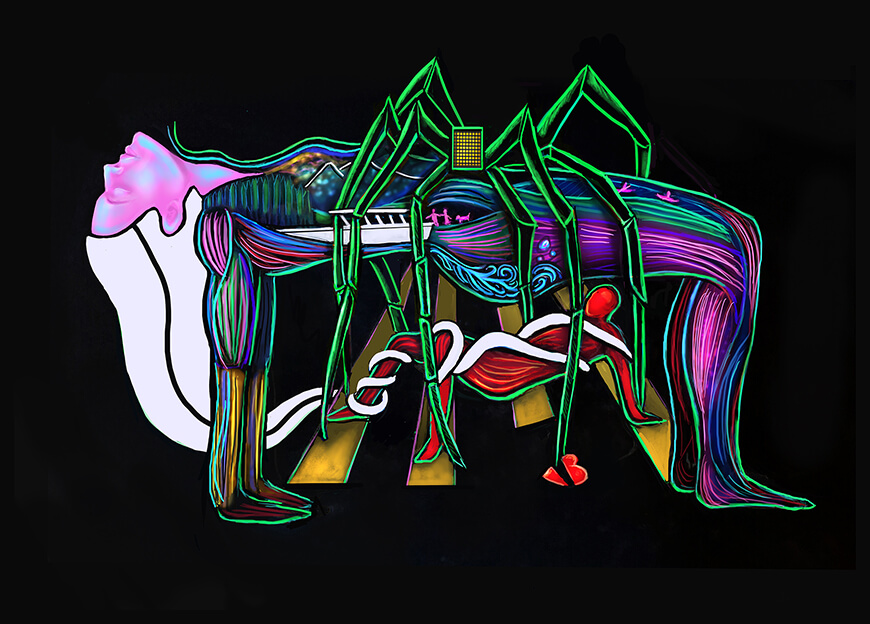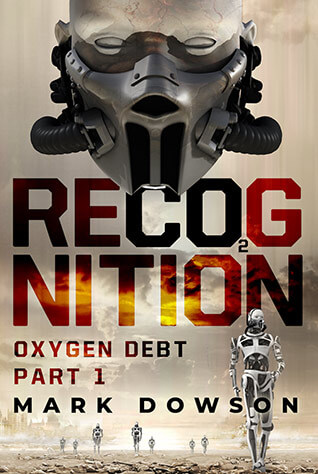Romantic Timetravel or Political Cli Fi Thriller?

The romantic interest
In the story the protagonist fears getting close to a soul mate due to being psychologically affected by the fear of losing someone he gets close to, will affect him traumatically in the same way that has affected him losing his mother.
UNA’s agent Merisi tries to indicate to the protagonist that he needs to stay close to someone who cares for him and who can help him find his true path to his destiny. The protagonist needs his soul mate for companionship on his journey to the future to offset his weaknesses with his soul mate’s strengths.
The political interest
In the story both UNA a global public sector organisation and GIATCOM a global private sector enterprise in the future have different political and economic agendas, to make use of the protagonist’s creative vision for the future of the world. Can we distinguish which political and economic agenda would be the best for future prosperity in designing our future city infrastructures?
How Cities Can Learn from the Human Body’s Systems
09.10.14 | By Mark A. Ehlen
Facebook Twitter
Much like the human body with its skeletal, cardiovascular and nervous systems, cities have infrastructure systems, such as highways, water systems and communications systems that allow people to move about the city, deliver goods and services and share information. But as we’ve seen recently, these city infrastructures often collectively fail during man-made and natural disasters. Why? Unlike the human body, these systems are often developed in silos, over time, in less-than-perfect ways. They are typically built for normality, not adaptability. As a result, there is no guarantee — often no real plan — that they work well together when subjected to a shock like flooding, a large earthquake, a heat wave, or a long-term stress such as explosive population growth and ensuing congestion.
The way these systems become interdependent can make a city brittle, and it means that in a disaster, a failure in one system quickly cascades to the next. For example, metropolitan water is used for drinking, but also for local agriculture and power generation. A drought that severely constrains water means that water for human consumption must become a priority, but that can lead to a loss of water for agriculture, as California is now experiencing, and power generation. To combat these water cascades (no pun intended), cities must not think about water systems without also thinking about food and power systems. As with the human body, each of these systems is semi-autonomous to capitalize on its specialized function, but will fail – now or in the future – if it can’t rely on the other systems. Hold your breath for a minute and think through all the system cascades your body will go through – aerobic, circulatory, muscular, nervous system – to adapt to the loss of just one system. The difference is your body has evolved this adaptive ability; many cities have not.
Infrastructure systems cascade during disaster, lead to more disruption
There is no shortage of real examples where infrastructure systems cascade during disruption:
- After Superstorm Sandy, impassable roads led to inability to restore electric power. That led to an inability to fuel cars and trucks due to flooding and a lack of electricity to pump fuel. That cascaded into further economic impacts, as people were unable to get to work.
- In the 2011 Fukushima earthquake and tsunami, flooding of backup generators caused overheating of fuel and nuclear release.
- During Hurricane Katrina, few believed that the levies would break, and when they did, the massive flooding caused loss of human life and ran roughshod through emergency response, medical care, water and wastewater systems and transportation services.
- The Northeast Blackout of 2003 caused boil-water orders and widespread cellphone outages, causing illness and hindering emergency response.
- A 2012 power outage in India left 600 million people without electricity, disrupting water supply, stalling hundreds of passenger trains, and stranding 200 miners (some blame this failure on India’s explosive growth).
As a result of these system failures, lives are deeply, often permanently changed; many businesses disrupted by these disasters never return.
The bottom line is that from a resilient-city policy point of view, it’s not enough for water, electricity or fuel systems to be resilient to shocks. The linked water-electricity-fuel systems need to be resilient to these shocks.
So, what can cities do?
- Design or redesign: Cities need to design – mostly redesign – their systems for resilience, that is, so that they can continue to deliver services in the event of a shock or acute stress. New York State, for example, now requires that a certain number of gas stations in each locality have backup generators, so that a power outage doesn’t prevent people from fuelling their cars.
- Analyze interdependencies: Getting to resilient designs will require better understanding – through analysis – of what these interdependencies are. Which infrastructure are most important for near- and long-term resilience? What infrastructure risks – loss of electricity, transportation or emergency response – most jeopardize the city’s people-resilience goals and why? What interdependencies between these systems could cause shocks and stresses across these systems, affecting the resilience of them all? And what are the benefits and costs a particular resilience design buys a city?
Metrics for cities on the way
Resilience analysis will require risk assessment and resilience measurement. As we speak, metrics are being generated: a recent Suisse Re study estimates city risks to natural disasters; a recent Grosvenor study takes it one step further by analyzing cities’ resilience based on their vulnerabilities and adaptive capacities. The latest C40 Report outlines climate adaptability metrics and design approaches for 63 member cities. And cities can utilize advanced techniques, such as scenario planning in conjunction with options analysis, to address not only climate and other future uncertainties but also what adaptability cities can put in place to be resilient to that uncertainty.
Smart growth – literally, being smart about city growth – can generate a resilient future if cities tame these increasingly ungainly infrastructure systems, through analysis and then resilient design or redesign, and implement these designs through city planning, investment and coordination. Designing infrastructure for resilience can be done while designing for growth. Individually and collectively these systems can and do serve us well – even thrive – during growth, stress and shock. And even during everyday life.
Another geologist, Bill McGuire of University College in London, is quoted as saying, “All over the world evidence is stacking up that changes in global climate can and do affect the frequencies of earthquakes, volcanic eruptions and catastrophic sea-floor landslides. Not only has this happened several times through Earth’s history, the evidence suggests it is happening again.”
It’s going to be very rough time for lots and lots of us worldwide in the coming years and decades, but if we do our work well, if we stand up together against the climate deniers and their fossil fuel industry enablers, humanity still has a fighting chance of emerging on the other side with a very different world.
And life is better when you give of yourself for a cause that is right and just, no matter how heavy the odds.

